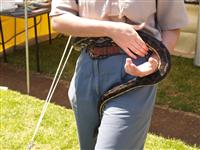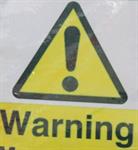
Train to be an Effective Tour Guide
- Flexible, self paced home study course
- Learn to be an eco tour guide
- Expert, highly qualified and experienced tutors
This course develops your ability to organise and conduct ecotourism services including tours and activities. This could range from guided tours, overnight walks and treks, or self guided interpretive walks. Ecotourism is the combination of Ecology and Tourism. Ecotourism is an industry that has developed hugely in recent years. It reflects both of the aims of modern conservation: husbandry of resources and protection of the environment. Modern ecotourism strives to be sustainable, so that the activities that are taking place can continue to do so. This course will introduce you to some of the aspects of ecotourism guiding including environmental awareness, planning tours,displays and interpretive aids, plant and animal interpretation.
COURSE STRUCTURE
There are 10 lessons as follows:
- Ecotourism Basics –
- Definition of ecotourism
- Negative ecotourism
- Ecotourist profile
- Administrative concerns
- Safety
- Interpretive Services in Ecotourism –
- Interpretation as a key element of ecotourism
- Interpretation techniques
- Sign design
- Ecology and Conservation –
- Definition of ecology
- Ecosystem function
- The web of life
- Habitat and niche
- Humans in the environment
- Plant and Animal Classification and Identification –
- Classification of organisms
- Basic taxonomy
- Using keys for identification
- Other methods of identification
- Geology/Geomorphology –
- Types of rocks
- Types of minerals
- Soils
- Soil formation
- Soil classification
- Interpreting Aquatic Environments –
- Marine environments
- Freshwater environments
- Fish
- Shells
- Crustaceans
- Interpreting Land Environments –
- Introduction to interpreting land environments
- Relevance of interpreting land environments
- Planning an Ecotour –
- Destination
- Transportation
- Accommodation
- Ecotour Displays –
- Design concepts
- Zoo design techniques
- Leading an Ecotour –
- Advertising
- Group preparation
- Planning the tour
- Group surveys for feedback
Each lesson culminates in an assignment which is submitted to the school, marked by the school's tutors and returned to you with any relevant suggestions, comments, and if necessary, extra reading.
 SUMMARY OF COMPETENCIES DEVELOPED
SUMMARY OF COMPETENCIES DEVELOPED
On successful completion of the course you should be able to do the following:
- An ability to analyse the structure of interpretive ecotourism in your country.
- To recognise factors of the environment and their significance to ecotourism.
- To plan an ecotour.
- Create/develop interpretation aids for a selected ecotourism activity.
- Develop a display with an ecotourism theme.
- Determine the specific name of a range of natural features in a selected wilderness area including:
- Birds
- Fish
- Shells
- Other animals
- Plants
- Lead an interpretive tour with an ecotourism theme.
- Develop innovative concepts in interpretation for a selected aquatic ecotourism activity.
- Develop innovative concepts in interpretation for a selected ecotourism activity in a land environment.
- Determine the specific name of a range of natural features in a selected wilderness area including, where appropriate:
- Fossils
- Rocks
- Land formations
- Soil types
- Geothermal features
WHAT THE COURSE COVERS
Here are just some of the things you may be doing:
- With each assignment you will be required to prepare identification sheets, containing a preserved specimen, a photograph or a drawing; together with a description of the species/type of organism.
This collection is designed to be the embryo of a resource which you may use as an ongoing aid when designing and conducting interpretive activities.
- You will research the legal and administrative background required to set up an ecotourism venture in your area. You will also look at the marketing and advertising possibilities for this venture.
- Visit a number of interpretive ecotourism facilities.
- Prepare an interpretive activities sheet for an ecotourism group.
- Visit a natural area and classify organisms sighted in a set time period.
- Identify points of interest in a natural area for an ecotourism group.
- Research the lifecycles of a number of plants and animals.
- Design a range of ecotours for ecotourists interested in various natural phenomena.
- Visit an aquatic environment and make observations on the organisms there and any pollution present.
- Identify potential ecotourism activities for a marine area.
- Develop interpretive techniques for minimal environmental impact.
- Attend an ecotour to assess the quantity and quality of information provided.
- Plan an ecotour including the destination, accommodation, transport, catering.
- Construct an ecotour display.
- Plan and lead an ecotour to a group of ecotourists or acquaintances.
How to keep the Tourist Safe

The ecotourist needs to be informed of the safety issues associated with the tour they have chosen. No nature based holiday is totally safe there are risks involved with many activities included in a tour or holiday.
All Ecotourism operators and their managers should have a safety program in place. This should be included in the ecotourism operator’s operations manual as discussed earlier. The information should also have a list of materials, products and general first aid equipment that needs to be included in the first aid kit. It is also important to note that administration of drugs can offer a risk to the operator and this would need to be further explored by ensuring that all guides have the correct first-aid qualifications.
A safety strategy should include:
- Guide and staff training
- Safety equipment
- Tourist participation.
POTENTIAL HAZARDS
Boating and rivers
Water can be are exceptionally cold and swift. If you fall in very cold water without protection such as a neoprene wet suit, you have about 3 minutes in which you are able to actively help yourself before you start to be disabled by hypothermia. The water is often so silty you cannot see underwater, including which way is up only a few inches below the surface. Other river hazards include weather, water levels, misjudged terrain, collision, entrapment, hypothermia, drowning, and falling overboard.
Wild animals
In most parts of the world you will be exploring the habitat of wild animals ranging from poisonous snakes in Australia to the Grizzly (Brown) and black bears that are common along Alaskan rivers as they feed on salmon. Although the most common form of wildlife encountered will probably be harmless insects it is still prudent to be well informed and plan for unexpected encounters.
Exposure to weather and natural forces
In some areas of the world even in summer, exposure and hypothermia are very real hazards. Wind and rain can be common, and air is colder on the water. Strong winds, landslides, avalanches, glacial outburst floods, calving glaciers, and quicksand or even bushfires are some of the hazards that may be encountered.
Other Accidents
Camping has risks including sharp knives and fishhooks, fires, getting lost, wild animal encounters, and falling into the river and being swept away.
Training knowledgeable, trained, experienced, guides are the most valuable asset you can have. They should also be trained in first aid and the specific safety needs of the environment in which you are operating for example: swift-water rescue.
Equipment
Should be of the best quality and be appropriate to the tour and environment being visited and should include: first aid, emergency communications, repair kits, and rescue equipment.
Personal safety gear is a must for every trip participant and should also be appropriate to the tour for example: a safety-whistle, and neoprene wet suit helmets and for head protection when appropriate… Wearing a wet suit can extend your cold water survival up to 30 minutes, versus only about 3 minutes when dressed warmly without the wet suit.
Hygiene makes a big difference in health and safety. Hand washing and toilet facilities should be set up at each camp.
Guest Participation
Even the safest program will have a hard time succeeding without careful education of the participants. Every trip should start with a formal safety presentation, familiarizing the participants with some of the risks that may be encountered, and how to deal with them. Open dialog on safety should continue throughout the tour. Recommendations on clothing and personal gear, and its use in a safe and wise manner should also be included. Encourage questions and input from everyone on any safety issue or concern.
FIRST AID
Wilderness first aid is one of those things that, if you have all the gear, knowledge and training, you probably won't need to use. Maybe this is because groups that adequately prepare themselves are also relatively safety-conscious and don't get into trouble in the first place. The fact that you have the responsibility for the safety of the group travelling with you and that you are traveling to isolated areas far from help should influence everything you do; whether that be handling hot pots over a fire or running a rapid. Prevention is a much less painful and expensive option than finding a doctor in the wilderness.
Proper preparation is crucial for wilderness first aid. Staff should take a first aid course including CPR - it is pointless to have a well stocked medical kit if you don't know how to use it. There are many excellent first aid courses available through St. John's Ambulance and other organisations.
The dilemma is that most first aid courses assume that the ambulance is 10 minutes away and that the victim can swiftly be transported to a hospital. Try to find a wilderness course if you can. Better courses use extensive simulations and role playing components to teach the participants how to deal with real-life situations. Unless one uses first aid skills frequently the retention time of this knowledge is surprisingly short and frequent recertification is essential (every 3 years).
It is also important to remember that ALL near-drowning victims MUST be seen by a doctor AS SOON AS POSSIBLE. Even if the victim seems fine and is eager to go, complications associated with water inhalation are almost certain to arise
On a short trip you might only carry a basic first aid kit. The most frequently used items in your kit will probably be Band-Aids, so be sure to take an adequate supply. Your kit should include a checklist which you go over before every trip to ensure that all the components are there. On a longer trip, or with a larger group, you will want to carry one of several first aid books as well as a medical kit, which should be carried separately from the first aid kit.
SAFETY
Controlling Participants in Ecotourism Activities
Some types of activities are simply inappropriate & dangerous for certain types of people. There is a certain level of risk associated with any type of adventure activity, but that risk will be greatly increased if the participant does not have the physical abilities or appropriate skills to safely participate in the activity.
An ecotourism leader (as well as the operator -employer), can be held legally liable for injury to participants, if the appropriate precautions are not adhered to. Consider:
- contacts
- medications being used
- prior experience
- health problems
- any food constraints
Precautions may involve:
- Ensuring appropriate training (eg. certification for divers, a briefing session for bush walkers, etc).
- Having participants sign a form releasing the organisers from liability.
- Ensuring equipment is both appropriate and in good condition.
- Ensuring emergency measures are in place in case of an unforeseen incident.
You Need To Recognise When To Cancel!
Under certain conditions don't go ahead with an activity or tour. For example don’t’ take a diving trip out in rough weather; don't take customers back country skiing when a blizzard is approaching, etc.